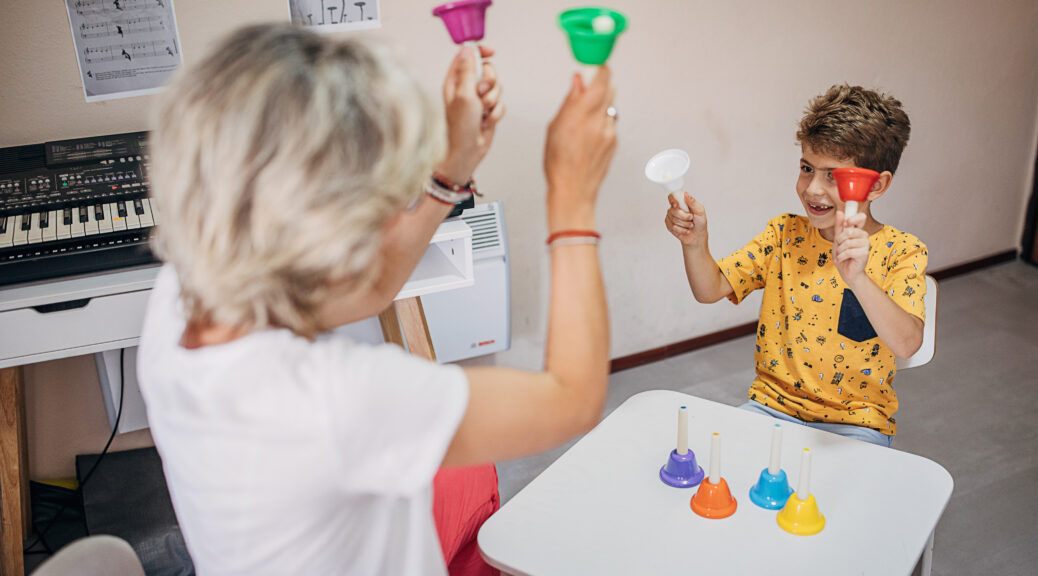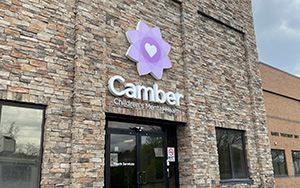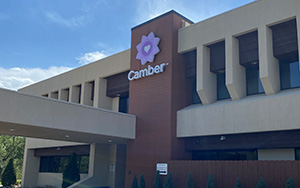From Insight to Innovation: The Powerful Impact of Expressive Therapies in Healing

Here at Camber Children’s Mental Health, we’re deeply committed to developing meaningful connections with the children and families we serve. Innovative therapies, like expressive therapy, play a key role in supporting clients and our team brings a wide variety of therapeutic methods into the care of those we serve.
Expressive therapies can help children feel more comfortable opening up to work toward healing, often used in tandem with traditional therapy. Discover why expressive therapy works, what caregivers should know about these techniques, and how expressive therapists become successful practitioners.
Why Expressive Therapy?
Expressive therapy is a growing field that is gaining traction in popularity because of its successful outcomes. This mode of therapy uses creative activities to help find, recognize, and process thoughts, emotions, and memories that may be more difficult to express in words. “Expressive therapies are an alternative method to traditional talk therapy,” explains Holly Phelps, Art Therapist with Camber. “These therapies incorporate a creative outlet like art, music, drama, and others to achieve mental health goals, in a more relaxed and natural environment.”
Camber utilizes a variety of innovative therapy techniques, including art, music, recreation, horticulture, equine, dance, virtual reality and more! Music and art therapy in particular have brought about outstanding outcomes for the children and teens we serve.
What does expressive therapy look like? Someone engaged in music therapy might experiment with songwriting, music-related games, learning instruments, meditation, journaling with music, music education or other music-related activities. Those involved with art therapy are encouraged to express themselves through creative activities like painting, drawing, sculpting, modeling, building, photography and more.
No matter which expressive therapy a child is interested in, the goals are very similar. Studies show that some key benefits of expressive therapies include:
- Learning to regulate emotions

- Fostering self-awareness
- Developing social skills
- Managing behaviors
- Reducing post-traumatic stress disorder (PTSD )
- Creating openness to trying something new
- Helping youth express themselves
Expressive therapies open the door for expression and the therapist responds based on the interaction. As Phelps explains, it’s “a conversation instead of a curriculum.” Expressive therapies can be empowering and effective in promoting vulnerability, creativity, connection, collaboration and self-confidence. This leads to practicing more positive coping strategies after leaving Camber.
How Talk Therapy and Expressive Therapy Complement Each Other
Expressive therapies create a way for therapists to better understand what someone, especially a child, is thinking, feeling and experiencing. It’s a window into their world. “Expressive therapies can sometimes provide an even more successful outcome compared to traditional talk therapy for children because music or art therapy resonates well with their brain functioning,” explains Kara LePage, Music Therapist with Camber.
 Traditional talk therapy continues to be a major part of successful treatment. Expressive therapies are not a substitute for talk therapy, but a complement. At Camber, collaborative efforts between therapists is a key to helping clients. Phelps says she enjoys working together with other therapists and always approaches her collaborations with the question: “How can we help and support a child’s goals through art?”
Traditional talk therapy continues to be a major part of successful treatment. Expressive therapies are not a substitute for talk therapy, but a complement. At Camber, collaborative efforts between therapists is a key to helping clients. Phelps says she enjoys working together with other therapists and always approaches her collaborations with the question: “How can we help and support a child’s goals through art?”
One Camber success story shows a positive example of expressive therapies and collaboration at work. Phelps recalls a 12-year-old who was experiencing a lot of chaos in her mind and her emotions. During her time at Camber, this child worked in collaboration with a talk therapist and art therapist. Through her sessions, it became clear that sexual abuse was present in her trauma and needed addressing.
Because she was working on the trauma narrative with both approaches — talk therapy and art therapy — she was able to process the emotions rationally and logically, and then process them creatively and effectively. This proved to be highly beneficial since art can be an outlet for stored trauma. Once she finally opened up, she felt more confident working through her past experiences. At this point, the young girl was able to reconnect with important relationships and move forward positively.
How Expressive Therapies Help Therapists Become More Successful Practitioners
Just as expressive therapies help children and teens achieve positive outcomes, incorporating expressive therapies can also help therapists become more successful as practitioners! With such a broad spectrum of client needs, ranging from trauma healing to calming anxieties or learning new coping skills, expressive therapists integrate their knowledge and passions to develop supportive and innovative solutions to achieve goals. 
When each group or individual session is so different from the last, therapists must grow and change alongside their clients. “It’s special to connect with someone through an art form,” says, Phelps, and the positive impact is felt by both the therapist and the student. When children let their creativity shine, therapists are inspired to creatively develop new ways to meet the needs of those in their care.
In another success story, a teen arrived at Camber closed off from the world and surrounded by a hard exterior. He grew up surrounded by illicit drugs and unsafe environments. As a result of the trauma, he found it difficult to trust those around him. Camber therapists needed to create an environment that provided safety and incorporated an expressive outlet. The answer? Spray painting and shoe box building! Ultimately, art therapy gave him a way to build back up after he’d been torn down so much before arriving. One of the main takeaways from his therapy sessions was learning that there is safety in connecting with others through art.
Innovative Approaches Improve Outcomes
“Many children want to be involved in expressive therapies and look forward to joining a music or art therapy session,” says LePage. Why? Expressive therapies bring immense value to those working through difficult circumstances, but more than that, it’s also a time that many enjoy.
 Once a child has gained a new skill or opened themselves up and been accepted in a vulnerable environment, this can positively impact their self-esteem and self-worth. Expressive therapies also give children a chance to learn something new: a joyful activity or hobby that they can use as a positive outlet in other aspects of their lives.
Once a child has gained a new skill or opened themselves up and been accepted in a vulnerable environment, this can positively impact their self-esteem and self-worth. Expressive therapies also give children a chance to learn something new: a joyful activity or hobby that they can use as a positive outlet in other aspects of their lives.
The success of expressive therapies shows that there’s more than one way to help a child thrive. As LePage says, “It’s rewarding to have a career you’re passionate about, and I’m grateful to have a place like Camber, that values expressive therapies.”
As the pioneer of trauma-informed mental healthcare models in the region, Camber has spent over 30 years developing and enhancing innovative therapies to help thousands of children live more balanced, healthy and resilient lives. Learn more about the wide variety of treatments we offer.






